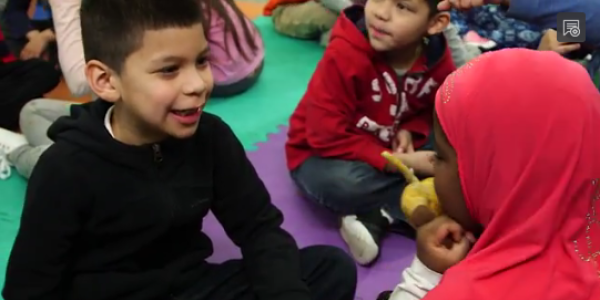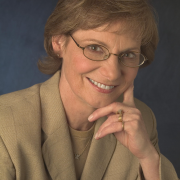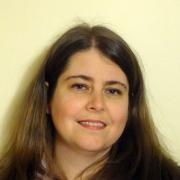Inspire Children to Think and Act Like Scientists

Watch the children in Ms. Poulin’s first grade classroom as they talk about an illustration in a book about animals and their habitats.
As you viewed the lesson, what did you notice? As I watched, I found myself drawn to the children’s close observation and attention to the details in the book illustration—and also to their use of sophisticated science vocabulary to describe and explain what they saw. I also noticed how carefully Ms. Poulin listened and how skillfully she built on the children’s ideas. As I watched, I was reminded of the “dance” that highly effective teachers do as they strategically shift their stance: sometimes leading, and other times stepping back and following children’s lead.
These observations prompted me to think a bit more about how skillful teachers do this. How do teachers create situations and opportunities that guide children to act on their natural powers of observation and curiosity and seemingly direct their own learning
The answer, I think, is simple: They engage children in the work of real scientists! That is, they create time and space for children to (a) notice and experience phenomena in the world, (b) ask important questions, (c) figure out ways to answers their questions, and (d) share what they learn with others. They create opportunities for students to be scientists!
Thinking and acting like scientists not only supports deep understanding of important real-world phenomena, it also helps children develop a self-concept as a capable learner. They start to take on the identity of a scientist, and they may even seek out other opportunities to think and talk like scientists!
Here are some ways to inspire children to think and act like scientists.
-
Build on children’s natural curiosity.
- Engage children in authentic or “real” science practices. For example, guide them to ask important questions, observe and gather evidence, and use the evidence to draw conclusions.
- Provide hands-on opportunities to seek answers to questions. For example, to explore floating and sinking, provide buckets of water to test various objects.
- Create opportunities to share new knowledge. Include informal ways like “turn and talk” as you wrap up a lesson, and more formal ways like a family night or classroom bulleting board or an online bulletin board.
-
Provide opportunities to ask important questions and work with others to find answers.
- Guide children to ask important questions about a curriculum topic (e.g., How do animals use their physical features to survive?).
- Provide opportunities to learn with and from each other (e.g., have children turn and talk to share ideas and comment on the ideas of others).
-
Help children connect their learning across various contexts.
- Use other content areas (e.g., reading, mathematics) to support science learning. For example, use informational texts to learn about animal adaptations, or use mathematics skills like counting and graphing to measure and record results of an investigation.
- Work with families to build home/school connections. For example, ask parents to send in a few items from home that children recognize (e.g., sponges, rocks, beach balls, marbles). Have children identify the familiar items and describe how they are used at home, and then use them as part of a classroom investigation on floating and sinking.
- Extend inquiry to informal learning times. For example, during snack time, ask children if they think food items would float or sink, and why. On the playground, look for items to place in a puddle to see if they float or sink.
To find lesson plans and videos that inspire children to think and act like scientists, visit Teaching Tips for Educational Media on PBS LearningMedia, developed by the Boston University School of Education.
Learn how to integrate inspirational teaching strategies into your daily routines with professional development courses from PBS TeacherLine’s special collection for early childhood educators.
The resources featured in this blog were developed as part of the Corporation for Public Broadcasting (CPB) and PBS Ready To Learn Initiative with funding from the US Department of Education. Ready To Learn is a federal program that supports the development of innovative educational television and digital media targeted at preschool and early elementary school children and their families.
Jeanne R. Paratore, EdD, is professor emerita of literacy education at Boston University. She has published widely on issues of classroom literacy instruction, family literacy, and integration of high-quality educational media with high-quality literacy instruction. She is one of only 100 worldwide elected members of the Reading Hall of Fame.

Lisa M. O’Brien, EdD, is assistant professor of reading and language education at Merrimack College, Andover, MA. Her work is focused on providing all children equitable opportunities to learn, and in particular on effective and engaging integration of technology in early childhood and elementary classrooms.
